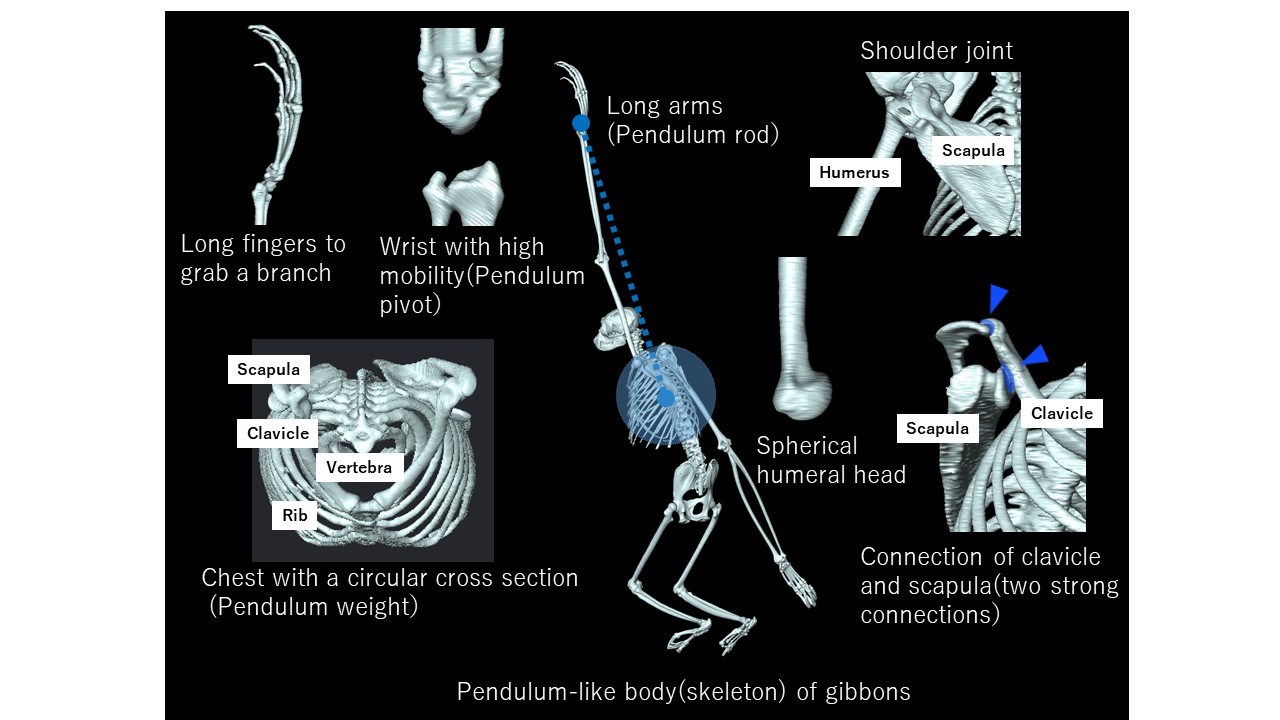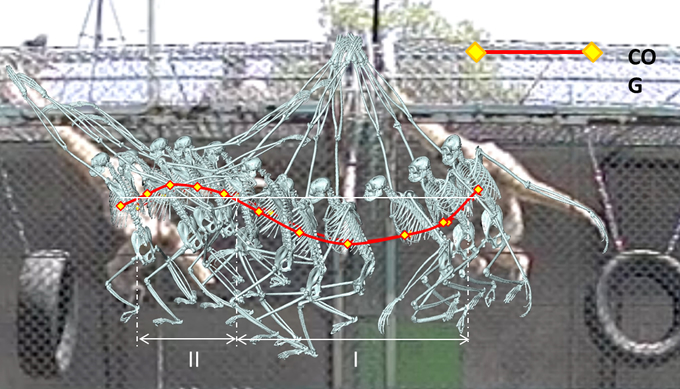
The apes are a subgroup group of Old World primates with no tail. The non-human apes have forelimbs longer than their hind limbs, a barrel-shaped chest, and exceptional mobility of the wrist joint. These traits are adaptations to an arboreal lifestyle and allow them to comfortably hang the entire body weight from one arm. Brachiation is a form of locomotion using only the forelimbs to swing from branch to branch .
The gibbons are especially proficient brachiators and exhibit both continuous brachiation, in which the body weight is transferred from one arm to the other and high speed richochetal brachiation, which includes a hanging phase when the weight is supported by single hand and aerial phase when the body is wholly airborne. This highly dynamic technique is used by gibbons to travel at speeds above 50kmph(ref.9). By launching into the aerial phase from different points in the arc of a swing they can also use ricochetal brachiation to gain or lose height, and to make abrupt changes in direction.

Fig. 28-1 3D CT scan of Lar Gibbon. Lar Gibbon has carpal joint & shoulde4r joint with high
mobility. The long and slender arm is strong connected with the body. The scapula that connect to
the trunk is located in the back. The Gibbon�s body is a pendulum.

Fig. 28-2 Continuous picture showing the changing center of gravity (COG)during richochetal
brachiation. Richochetal brachiation is composed of the pendular movement (I) and the parabolic
motion (II).